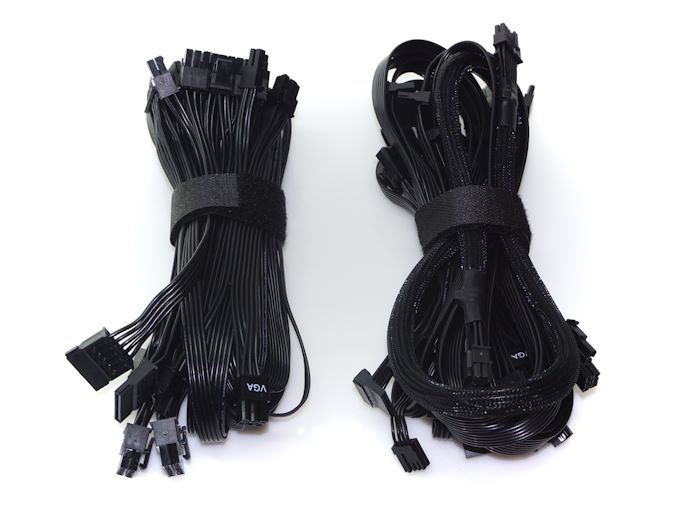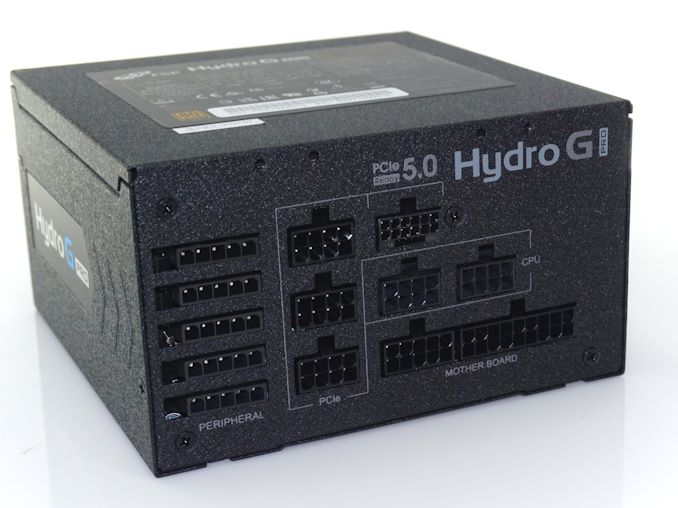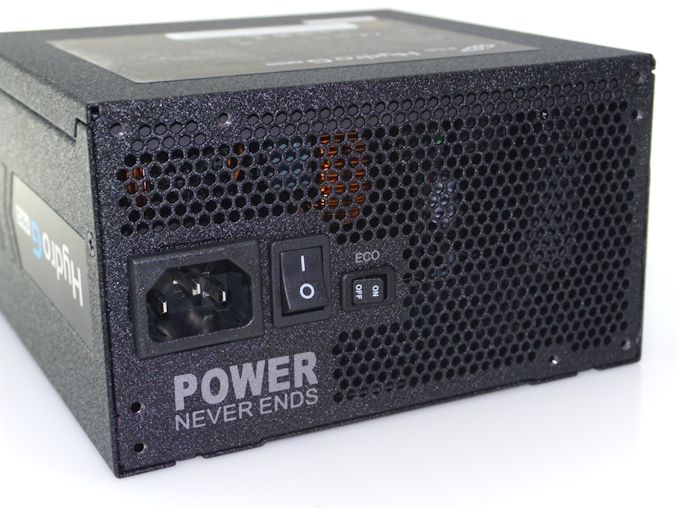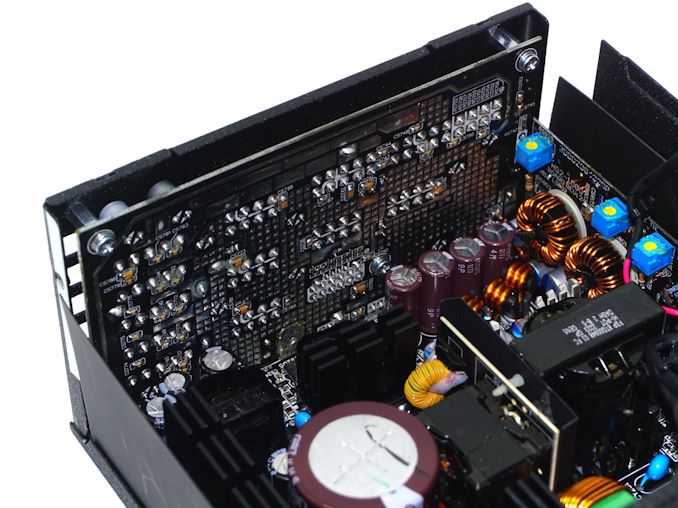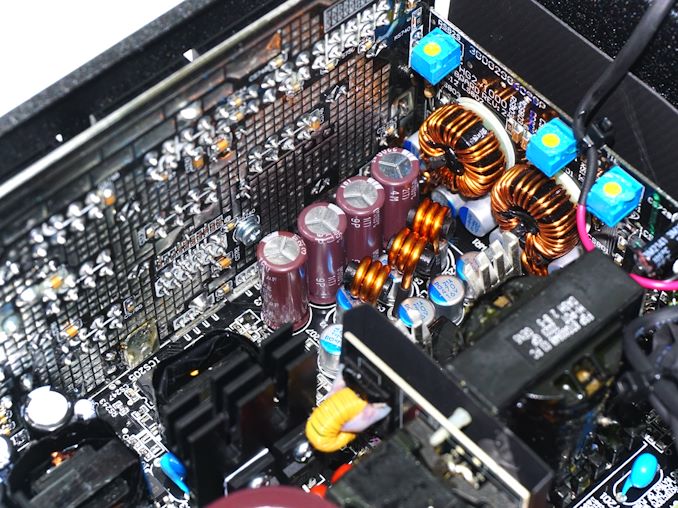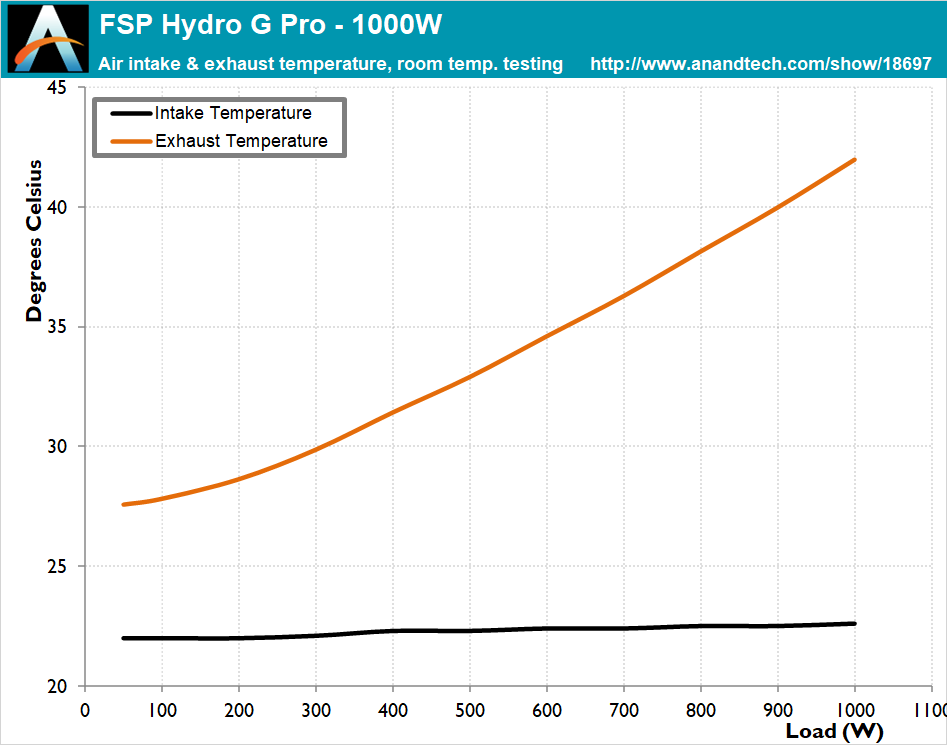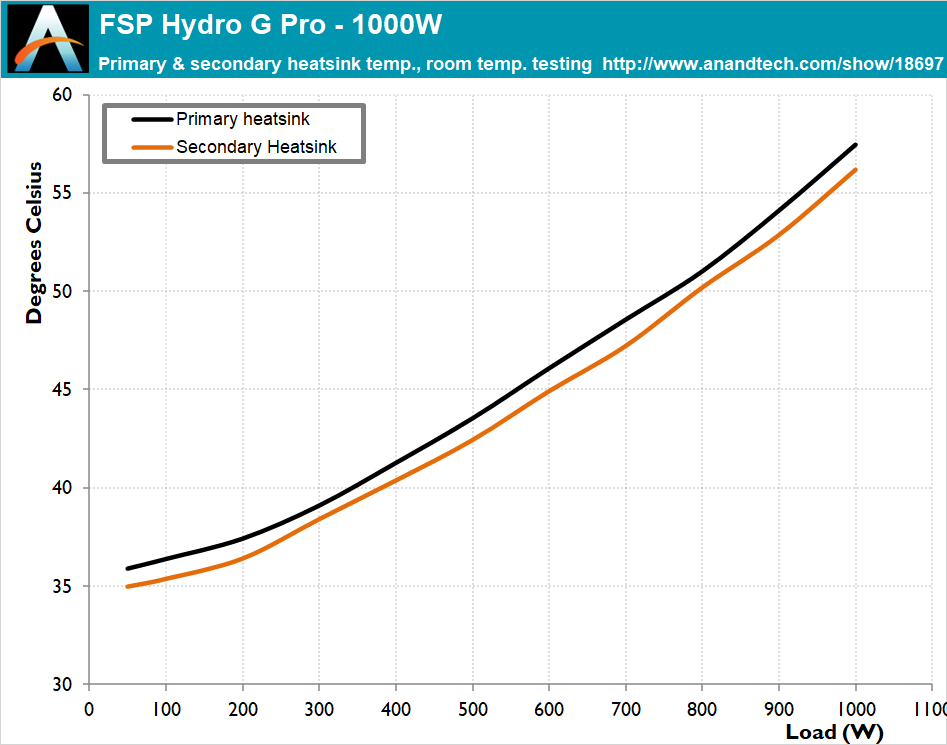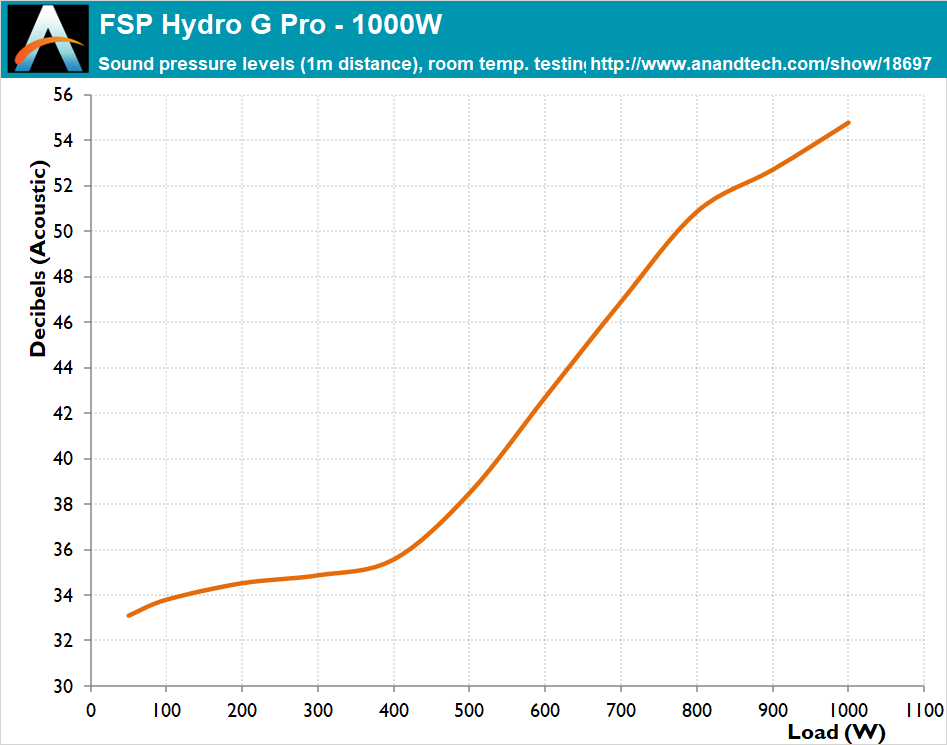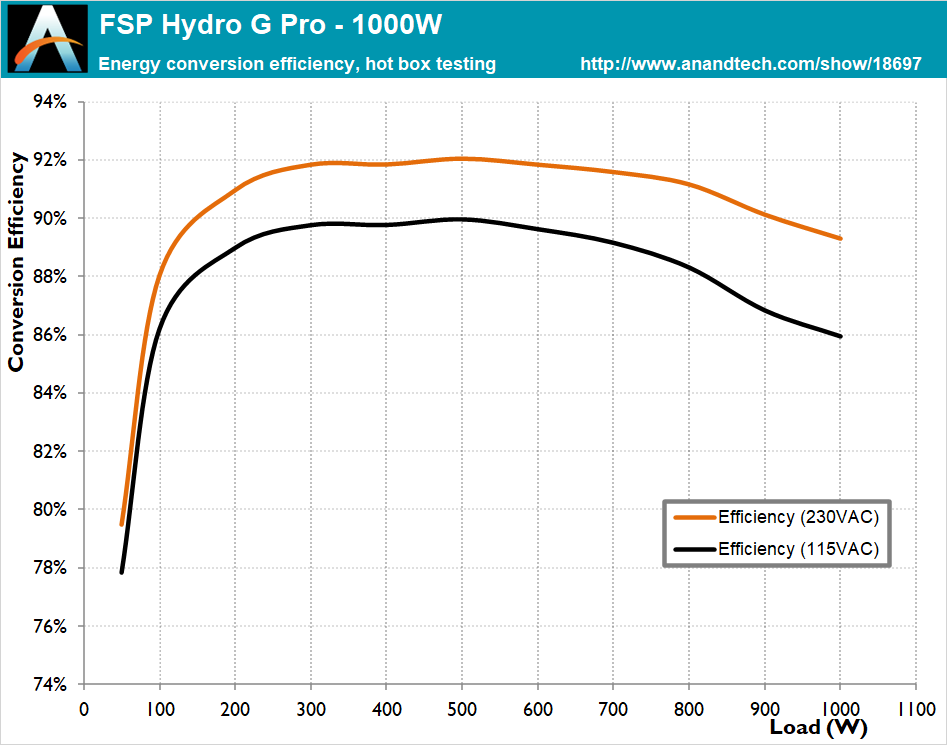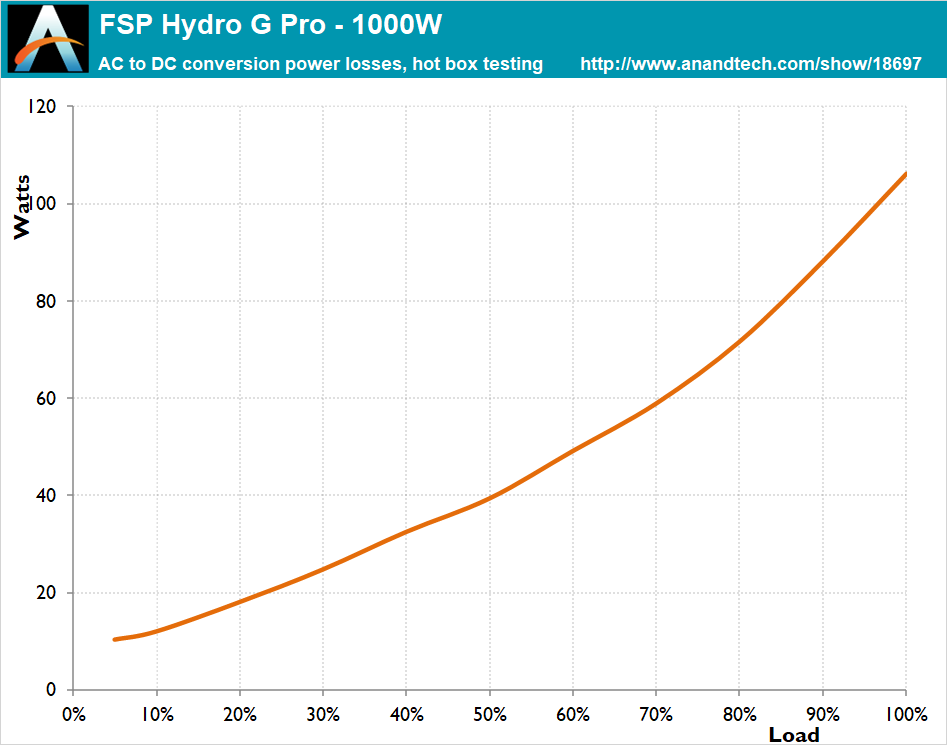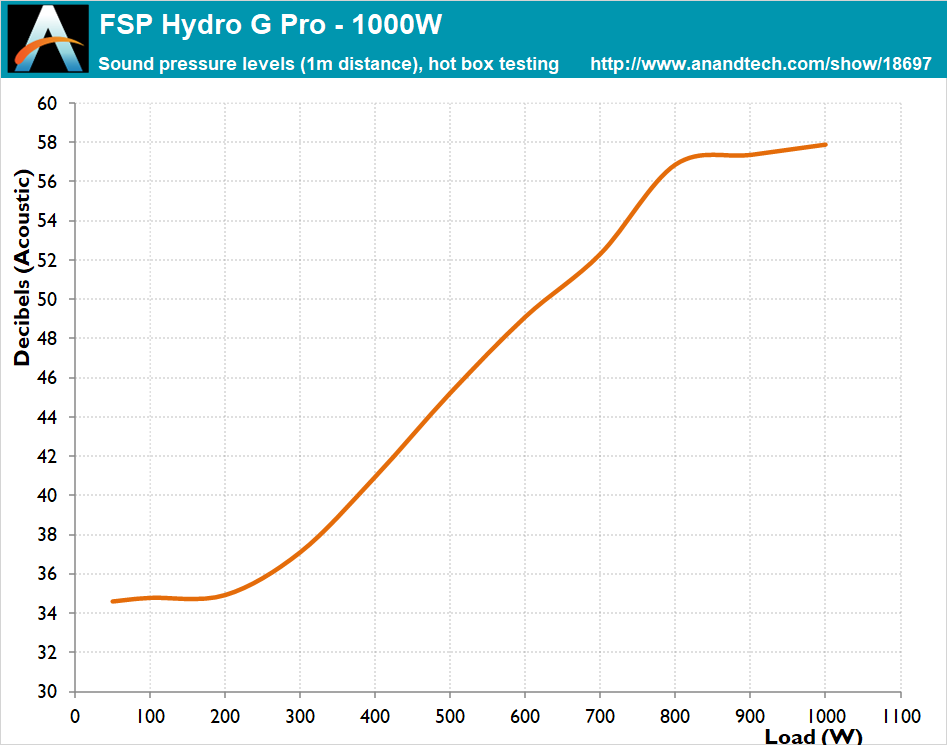
The FSP Hydro G Pro 1000W ATX 3.0 PSU Review: Solid and Affordable ATX 3.0
2023-01-19With the ATX 3.0 era now well underway, we’ve been taking a look at the first generation of ATX 3.0 power supplies to hit the market. Introducing the 16-pin 12VHPWR connector, which can supply up to 600 Watts of power to PCIe cards, ATX 3.0 marks the start of what will be a slow shift in the market. As high-end video cards continue to grow in power consumption, power supply manufacturers are working to catch up with these trends with a new generation of PSUs – not only updating power supplies to meet the peak energy demands of the latest cards, but also to better handle the large swings in power consumption that these cards incur.
For our second ATX 3.0 power supply, we’re looking at a unit from FSP Group, the Hydro G Pro ATX 3.0. Unlike some of the other ATX 3.0 PSUs we’ve looked at (and will be looking at), FSP has taken a slightly different approach with their first ATX 3.0 unit: rather than modifying its best platform or releasing a new top-tier platform, FSP went with an upgrade of its most popular platform, the original Hydro G Pro. As such, the new Hydro G Pro ATX 3.0 1000W PSU doesn’t have especially impressive specifications on paper, but it boasts good all-around performance for an affordable price tag ($199 MSRP). That makes FSP’s platform notable at a time when most ATX 3.0 come with an early adopter tax, with FSP clearly aiming to entice mainstream users who may not currently need an ATX 3.0 PSU but would like to own one in case of future upgrades.
| Power specifications ( Rated @ 50 °C ) | |||||
| AC INPUT | 100 – 240 VAC, 50 – 60 Hz | ||||
| RAIL | +3.3V | +5V | +12V | +5Vsb | -12V |
| MAX OUTPUT | 20A | 20A | 83.3A | 2.5A | 0.3A |
| 120W | 1000W | 12.5W | 3.6W | ||
| TOTAL | 1000W | ||||
| MSRP | $199 | ||||
As a true Original Device Manufacturer (ODM) that designs, develops, and sells their own PSUs, this sort of iterative strategy is one we’ve seen from FSP before, and one that has traditionally served them well. For example, almost nine years went by between our review of the Aurum PT series and the newer Hydro PTM series. As in that case case as well as now with the Hydro Pro G, FSP likes to develop proven designs that they can offer to consumers and downstream OEMs alike for many years to come. All of which means that when FSP does update or overhauls a platform, it’s for a very good reason – and typically warrants paying attention to.
We received the FSP Hydro G Pro ATX 3.0 1000W PSU in a striking cardboard box, with an additional cardboard ribbon around it. The box is very sturdy and, on the inside, additional packaging foam slabs and a nylon bag protect the unit from shipping damage. A wealth of information about the unit and its new PCIe 5.0 12WHPWR connector can be found on every side of the box, which is going to be very helpful for brick-and-mortar customers in particular so that they can avoid confusing this PSU with the original (non-ATX 3.0) Hydro G Pro.
Inside the box we found a bare-bones accessories bundle, a notable choice considering that this is for a flagship-level PSU. The company supplies only a simple AC power cable, four mounting screws, and a basic manual. There are also two sets of side stickers, one green, and one red. The blue set is already glued to the unit. These stickers are permanent and cannot be removed without damaging them.
The FSP Hydro G Pro 1000W PSU is a fully modular design, allowing for the removal of every DC power cable, including the 24-pin ATX connector. Nearly all of the cables are black, ribbon-like, with black connectors. The only exception lies with the PCIe 5.0 12WHPWR cable, which also is all-black, but it is a classic sleeved cable instead.
FSP’s marketers have printed on the box that the 12WHPWR cable is rated for up to “9.2 A per contact, with all 12 power contacts”. Unfortunately, that ends up being misleading choice of words, as it implies that all 12 contacts can deliver current to the card. Each of the power contacts of the 16-pin connector is indeed capable of handling 9.2 A, but there are only six voltage and six ground contacts. Which means that the cable has a maximum continuous current delivery capacity of 6 × 9.2 A, which fully conforms with Intel’s design requirements.
| FSP Hydro G Pro ATX 3.0 1000W | ||
| Connector type | Hardwired | Modular |
| ATX 24 Pin | – | 1 |
| EPS 4+4 Pin | – | 2 |
| EPS 8 Pin | – | – |
| 12VHPWR | – | 1 |
| PCI-E 8 Pin | – | 6 |
| SATA | – | 14 |
| Molex | – | 5 |
| Floppy | – | 1 |
External Appearance
The FSP Hydro G Pro ATX 3.0 1000W is rather compact for a 1 kW unit, with a chassis that is just 150 mm deep. It is technically not fully compliant with the ATX standard dimensions, which limit the depth of an ATX PSU to 140 mm, but 150 mm should not pose any problems in any modern ATX case. FSP sprayed the chassis with textured paint, which is aesthetically appealing and practically immune to fingerprints. The fan finger guard is a separate but custom part, with the company logo decorating its center.
The sticker with the unit’s electrical certifications and specifications covers about half the top side of the PSU. Decorative blue-themed stickers are pre-applied on the sides of the unit, which can be replaced with the red or green stickers that FSP includes in the package. The downside here is that the stickers will be destroyed once removed, making any choice technically permanent.
A typical on/off switch can be seen at the rear side of the unit, beside the power connector. Another small switch right next to it controls the “ECO Mode” of the cooling fan. When activated, the cooling fan will shut off while the load is under 300 Watts. The front side of the unit is home to the numerous connectors for the modular cables. A very subtle legend is printed under each group of connectors, sprayed directly onto the chassis.
Internal Design
FSP once again entrusted the cooling of their PSU to Protechnic Electric, a brand we usually find taking care of the cooling needs of their PSUs. The MGA12012XF-O25 is a 120 mm fan with a fluid-dynamic bearing (FDB) engine and an extremely high maximum rotational speed of 2700 RPM.
As we mentioned above, there are no hidden ODMs to discover here – FSP is both the designer and the manufacturer of the Hydro G Pro 1000 Watt PSU. A swift look at it reveals that it is based on nowadays common topologies and equipment, with the company clearly aiming for simplicity and reliability.
The filtering stage is textbook, with a total of four Y capacitors, two X capacitors, and two filtering inductors leading to a dual input rectifying bridge configuration. Both of the rectifying bridges have their own heatsink sandwiched in between them. The passive APFC components are a large 450V/680μF APFC capacitor by Nippon Chemi-Con and a large filtering coil wrapped inside a protective foil. The active APFC components are on a long heatsink right across the edge of the PCB.
Two transistors form a typical half-bridge inversion topology at the primary side of the unit, while six MOSFETs placed at the underside of the PCB generate the 12V line at the secondary side of the transformer. The 3.3V and 5V lines are being generated via the DC-to-DC conversion circuits. All in all, this is a very typical configuration for an 80Plus Gold certified unit. All of the secondary capacitors, electrolytic and polymer alike, are provided by Nippon Chemi-Con and Rubycon, both Japanese manufacturers.
For the testing of PSUs, we are using high precision electronic loads with a maximum power draw of 2700 Watts, a Rigol DS5042M 40 MHz oscilloscope, an Extech 380803 power analyzer, two high precision UNI-T UT-325 digital thermometers, an Extech HD600 SPL meter, a self-designed hotbox and various other bits and parts. For a thorough explanation of our testing methodology and more details on our equipment, please refer to our How We Test PSUs – 2014 Pipeline post, as well as our addendum on ATX 3.0/12VHPWR testing.
The FSP Hydro G Pro 1000W manages to reach efficiency levels that would grant it an 80Plus Gold certification regardless of the input voltage. This is rare, as most manufacturers aim to meet the certification requirements with an input voltage of 115 VAC, where the required efficiency figures are lower. It has an average nominal load range (20% to 100% of the unit’s capacity) efficiency of 91.8% when powered from a 230 VAC source, which drops down to 89.3% when powered from a 115 VAC source. The efficiency gap between the two input sources is quite high, suggesting that the design has been optimized for an 230 VAC input. Nevertheless, this design has very good low and high load efficiency, which also suggests that minor tweaks could easily have it reaching 80Plus Platinum levels with an 115 VAC input voltage.
We ran our tests with the Eco mode disabled, meaning that the fan began spinning instantly when the PSU was powered on. The fan runs at very low RPM while the load is up to 400 Watts, which also is most of the range that the Hydro G Pro could operate without relying on its fan at all (enabling the Eco mode will keep the fan from spinning until the load reaches 300 Watts). However, when the load is greater than 450 Watts, the speed of the fan keeps increasing alongside with the load, reaching figures above 50 dB(A) while the PSU is operating at maximum capacity. The internal temperature of the PSU remained very low at all times, suggesting that the designer favored reliability over acoustics.
As happens with every typical PSU, the efficiency of the FSP Hydro G Pro takes a hit when the ambient temperature rises significantly. The drop is an average of 0.6% across the nominal load range, which is reasonable for a well-designed PSU of this class. There is very little change on the efficiency drop when the PSU is heavily loaded, suggesting that the components are handling the high temperatures without any significant thermal stress.
The high ambient temperature duly results in high internal temperatures. Regardless, the component temperatures are relatively low when taking into account the efficiency and power capacity of the PSU. The Hydro G Pro is one of the few units that seem to have a significantly more efficient secondary side – the heatsink used for the two primary side transistors is substantial and does a fair job but the secondary side still runs cooler.
When the FSP Hydro G Pro operates inside an adverse environment, the cooling fan initially is fairly quiet and comfortable but only with a load of up to 300 Watts. After that point, the speed of the fan keeps increasing and even reaches its maximum speed of 2800 RPM significantly before the load is at 1000 Watts. The noise levels are very high by the time the load is at 500 Watts, and reach the practically intolerable level of 58.1 dB(A) at its peak.
As part of our testing, we also check output parameters are within specifications, as well as voltage ripple and line noise.
| Main Output | ||||||||
| Load (Watts) | 202.85 W | 504.96 W | 753.18 W | 1001.57 W | ||||
| Load (Percent) | 20.28% | 50.5% | 75.32% | 100.16% | ||||
| Amperes | Volts | Amperes | Volts | Amperes | Volts | Amperes | Volts | |
| 3.3 V | 1.85 | 3.38 | 4.62 | 3.37 | 6.93 | 3.35 | 9.24 | 3.34 |
| 5 V | 1.85 | 5.11 | 4.62 | 5.09 | 6.93 | 5.07 | 9.24 | 5.05 |
| 12 V | 15.39 | 12.16 | 38.47 | 12.11 | 57.71 | 12.04 | 76.94 | 12.01 |
| Line | Regulation (20% to 100% load) |
Voltage Ripple (mV) | |||||
| 20% Load | 50% Load | 75% Load | 100% Load | CL1 12V |
CL2 3.3V + 5V |
||
| 3.3V | 1.1% | 12 | 16 | 22 | 24 | 20 | 24 |
| 5V | 1.25% | 10 | 16 | 22 | 26 | 20 | 24 |
| 12V | 1.2% | 18 | 26 | 30 | 38 | 40 | 26 |
The electrical performance of the FSP Hydro G Pro 1000W PSU is very good, but there is a small catch. The company advertises voltage regulation as “under 1%”, however we found that to be incorrect, as the voltage regulation across the nominal load is at about 1.2%. And this ends up being the case on all three voltage lines.
Still, while this technically puts the PSU out of compliance with FSP’s claims, it’s hard to get too worked up; 1.2% is very good for a modern PSU. Filtering is very good as well, with a maximum of 38 mV on the 12 V line and 26 mV on the 3.3V/5V lines. Overall, these are very good power quality figures, especially considering the class and power output of the Hydro G Pro.
As part of our standard benchmarking, we also test the primary protections of all PSUs we review (Over Current, Over Voltage, Over Power, and Short Circuit). The FSP Hydro G Pro 1000W ATX 3.0 unit successfully passed all of the tests, generally reacting timely when needed and shutting down to protect itself and the components it is powering. Perhaps even a bit too quickly for an ATX 3.0 unit, as the OCP protection kicks in almost immediately at just 108% of the unit’s rated ampacity, suggesting that FSP’s engineers managed to create an exceptional control circuit that can very quickly discern between a power excursion and an actual electrical fault.
The Hydro G Pro series marks the first addition of FSP to the list of ATX 3.0 compliant PSUs. FSP tactically decided to release a product with good overall power delivery characteristics, but also making sure to accomplish this at reasonable price tag, tackling the competition in terms of value. And if that’s not enough, the company also plans to cover the top-tier market with an ATX 3.0 compliant 80Plus Platinum PSU series that is coming out this month.
From an engineering point of view, the Hydro G Pro is not particularly advanced by today’s standards. If not for the DC-to-DC circuitry, this platform could very well have been released from 10-15 years ago. Nevertheless, the layout is cleverly designed and the components are of superb quality. FSP’s engineers clearly chose to go with a highly proven configuration and readily available components deliberately, ensuring the seamless production of a reliable product.
The overall performance of the Hydro G Pro 1000W ATX 3.0 PSU is good. It certainly does not break any performance record, but it will not disappoint most users. The highlight of its performance is its high and stable efficiency across the entire nominal load range, as well as the above-average efficiency at very low loads. Even though its voltage regulation is a little worse than advertised, the quality of its output power is very good, with the Hydro G Pro proving that it can deliver excellent power quality even when stressed under adverse ambient conditions. The powerful cooling fan will dishearten users that want a PSU capable of staying relatively quiet when heavily loaded, but it does keep the Hydro G Pro running at low temperatures for a unit with that kind of efficiency.
Overall, the FSP Hydro G Pro 1000W ATX 3.0 has been built using a tried and true recipe for success. It is a product designed with long-term reliability in mind, efficient, and with good overall performance. Furthermore, its retail price is very reasonable – with an MSRP of $199, it can compare to and compete favorably with existing ATX 2.x units. All of which gives users currently in the market for a powerful PSU an avenue to pick up an ATX 3.0-compliant product without spending significantly more. However, even though it currently has little to no competition, the nemesis of the Hydro G Pro ATX 3.0 unit is its own availability. FSP clearly cannot keep up with demand, as we’ve found the Hydro G Pro to be out of stock more often than not.

